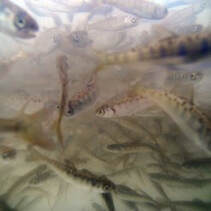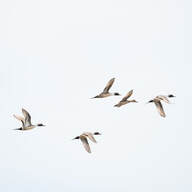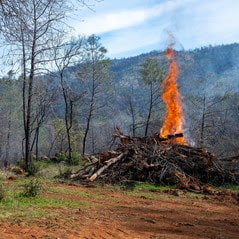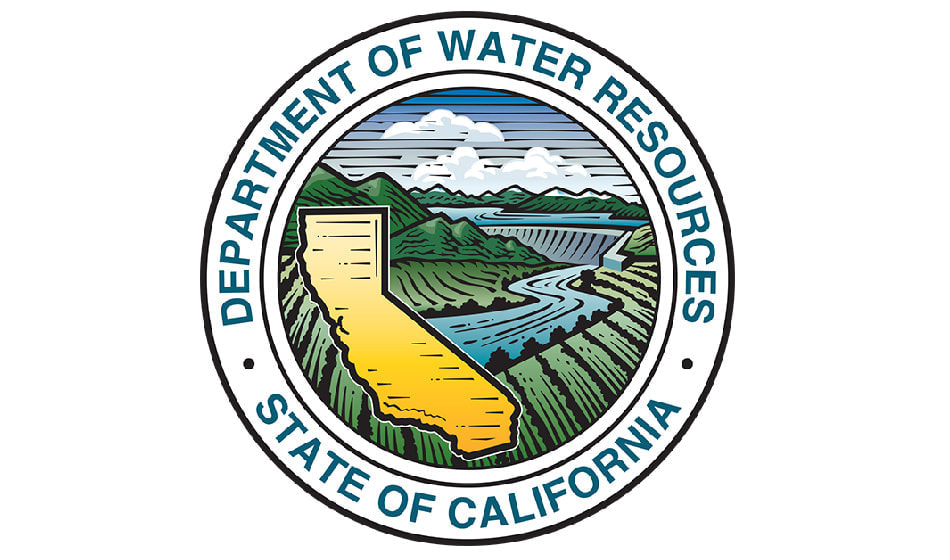 Fish Hatchery Increasing Fall-Run Chinook Salmon Production The California Department of Water Resources (DWR) and the California Department of Fish and Wildlife (CDFW) will increase the Feather River Fish Hatchery’s production of fall-run Chinook salmon in 2023 to approximately 9.5 million fish to combat the impacts of drought and a thiamine deficiency affecting natural spawning and in-river production. The hatchery, owned by DWR and operated by CDFW, is seeking to produce approximately 8 million fall-run Chinook salmon smolts and 1.5 million fall-run Chinook salmon fingerlings in 2023 – a 3.5 million increase over typical production goals. Two million of the additional salmon smolts produced will be trucked to release sites in the San Pablo and San Francisco bays to maximize survival. Another 1.5 million of these additional fish will be released into the Feather River earlier in the season and at a smaller size than typical river releases. This is an experimental effort to take advantage of more favorable weather and river conditions in early spring. For more information about increased fall-run Chinook Salmon production, read CDFW’s press release.  STEELHEAD SPAWNING Feather River Fish Hatchery staff will begin steelhead spawning operations Dec. 28 and continue through early February. These fish will enter the hatchery via the fish ladder that leads up from the Feather River Fish Barrier Dam and can be seen at the viewing windows and facility. Once the spawned fish eggs have hatched, the juvenile fish will be reared at the hatchery for a full year and then released next winter into the Feather River. If there are any surplus fish beyond the production goal of 400,000, fish may be planted into the Thermalito Afterbay for recreational fishing. Like the salmon that populate the Feather River, steelhead trout migrate from freshwater to marine (ocean), returning to freshwater environments to spawn. Unlike salmon, they can spawn several times during their lifetime and can live up to eight years. The “steelhead” name comes from their appearance, a more streamlined shape than Chinook salmon with a silvery or brassy color as an adult. The Feather River Fish Hatchery is a California State Water Project (SWP) facility built in the late 1960s to mitigate impacts on fish migration resulting from the construction of Oroville Dam which prevented access to spawning grounds further upstream. Daily visiting hours at the facility are 8 a.m. to 3 p.m.  HUNTING AT OROVILLE WILDLIFE AREA With approximately 11,800-acres of forested upland and riparian habitat along the Feather River and around the Thermalito Afterbay, the Oroville Wildlife Area is open for hunting with most hunters pursuing waterfowl at the Afterbay. Some interior ponds have also filled with enough water to permit duck hunting, while upland hunters have had success harvesting quail, squirrels, and rabbits this time of year. In the spring, CDFW will draw permits for special turkey hunt opportunities including the Junior Hunt weekend and select weekends. Turkey hunting is not permitted in the fall at the Oroville Wildlife Area. Check CDFW hunting regulations for more information. Oroville Wildlife Area is a “Type C” wildlife area (hunting pass not required) and is open for hunting seven days a week with entry hours limited from 1.5 hours before sunrise to one hour after sunset. No rifles or pistols may be used or possessed on the wildlife area except at the designated shooting range (Rabe Rd. Shooting Range off Larkin Rd.; open seven days a week from sunrise to sunset). Lead ammunition cannot be used while hunting in California.  FUEL LOAD MANAGEMENT DWR continues vegetation management activities around the Oroville area to remove overgrown vegetation and create a more wildfire resilient landscape. Over the next few months you may see crews working in various areas including Loafer Creek, Canyon Drive, along Oro Dam Blvd. East, and the Feather River Fish Hatchery. CAL FIRE, Butte County Fire Department, Butte County Sheriff’s Office, California Conservation Corps (CCC), and crews from the Butte Fire Center continue to cut, pile, chip, and pile burn as weather allows. Vegetation management activities will continue through the winter, weather permitting. Smoke from pile burning activities will continue to be visible in the Oroville area. DWR’s Fuel Load Management Plan (FLMP) works to reduce wildfire risk and increase public safety around Lake Oroville. Previous FLMP projects in the Loafer Creek Recreation Area have been identified as contributing to the slowing of the 2020 North Complex Fire as it approached Kelly Ridge, increasing firefighters’ ability to establish a secure fire line, and preventing the fire from progressing. Ongoing management of the FLMP remains a high priority for DWR and local partners.  OROVILLE RECREATION DWR and California Department of Parks and Recreation (State Parks) maintain over 92 miles of trails in the Oroville area. Popular with mountain bikers, hikers and equestrians, trails near the Thermalito Diversion Pool can be accessed from Cherokee Road and offer ample opportunity for viewing the local wildlife. Trails along the south side of the Diversion Pool can be accessed from the trail access parking lot west of the South Feather Powerhouse and accessible from Hyatt Powerplant Road. Trails and their permitted uses (hike, bike, horse, multi), day use areas, boat ramps, and other recreation facilities are featured on DWR’s interactive Lake Oroville Recreation webpage. The Lake Oroville Visitor Center is open Tuesday through Thursday from 9 a.m. to 5 p.m. and offers visitors numerous educational exhibits, a theater featuring videos about the building of Oroville Dam, and walking and hiking trails. The Bidwell Canyon concrete boat ramp is open at Lake Oroville. State Parks has provided a floating dock for users at the ramp along with portable restroom facilities. Both the Lime Saddle and Bidwell Canyon marinas are open from 8 a.m. until sundown with shuttle service and boat rentals available. Paved boat ramps are also available at the Thermalito Afterbay and the Thermalito South Forebay. CURRENT LAKE OPERATIONS Oroville’s reservoir is about 671 feet elevation and storage is approximately 1.04 million acre-feet (MAF), which is 30 percent of its total capacity and 57 percent of the historical average. Fog in the valley is expected through the holiday weekend with intermittent rain showers throughout the week. The Feather River releases are currently at 950 cubic feet per second (cfs). Flows through the City of Oroville are 650 cfs with 300 cfs released from the Thermalito Afterbay Outlet (Outlet) for a total of 950 cfs downstream of the Outlet. DWR continues to assess releases to the Feather River daily. The public can track precipitation, snow, reservoir levels, and more at the California Data Exchange Center. The Lake Oroville gage station is identified as “ORO”. All data as of midnight 12/22/2022.  California is in its third year of drought conditions. With water conservation now a way of life in California, everyone is encouraged to find ways to save water. See tips, tools, and ideas on the Save Our Water website. Information about real time local hydrological conditions, forecasts, and water conditions is available on DWR’s new website California Water Watch. Comments are closed.
|
Archives
October 2023
Categories
All
|


 RSS Feed
RSS Feed